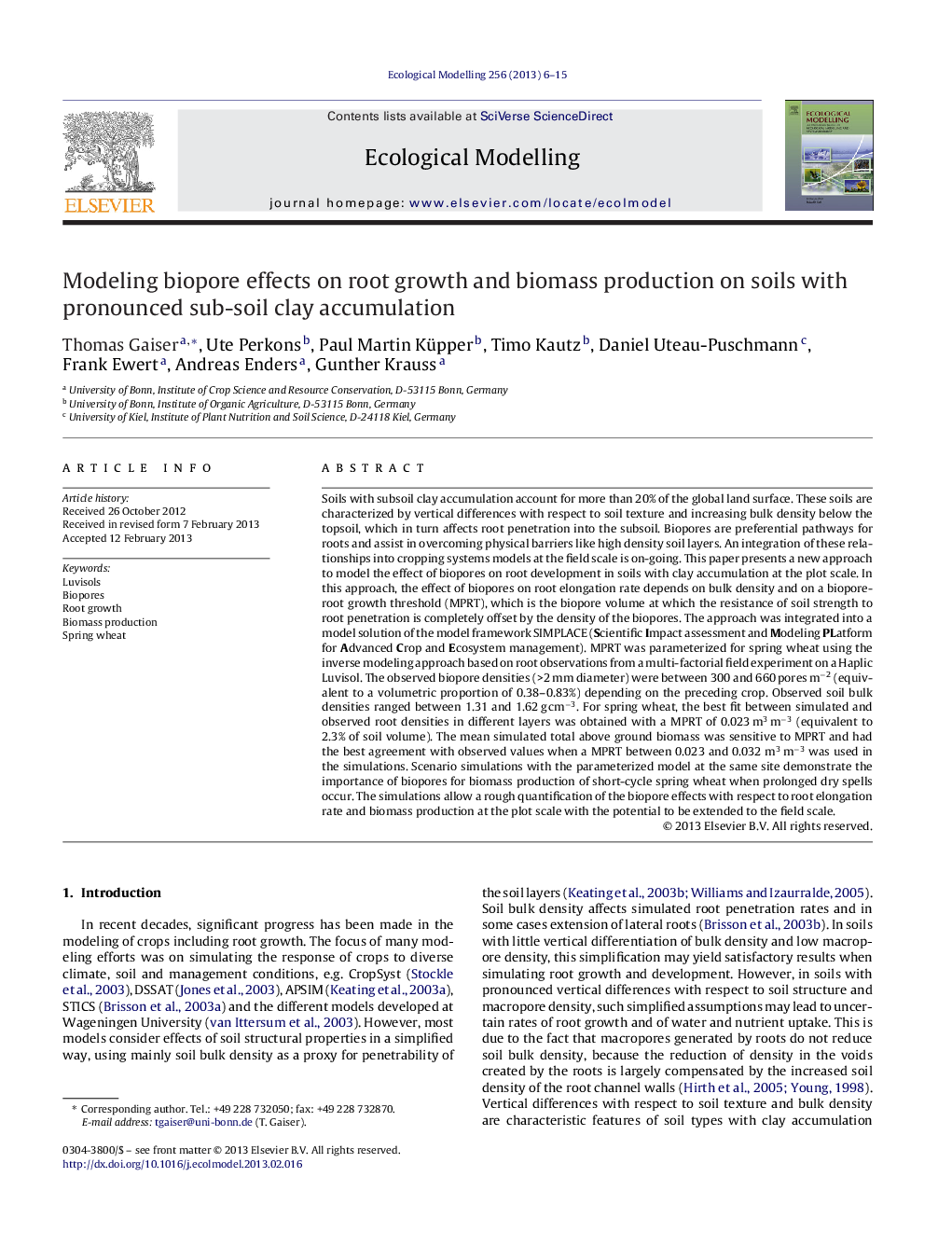| کد مقاله | کد نشریه | سال انتشار | مقاله انگلیسی | نسخه تمام متن |
|---|---|---|---|---|
| 6297228 | 1617489 | 2013 | 10 صفحه PDF | دانلود رایگان |
Soils with subsoil clay accumulation account for more than 20% of the global land surface. These soils are characterized by vertical differences with respect to soil texture and increasing bulk density below the topsoil, which in turn affects root penetration into the subsoil. Biopores are preferential pathways for roots and assist in overcoming physical barriers like high density soil layers. An integration of these relationships into cropping systems models at the field scale is on-going. This paper presents a new approach to model the effect of biopores on root development in soils with clay accumulation at the plot scale. In this approach, the effect of biopores on root elongation rate depends on bulk density and on a biopore-root growth threshold (MPRT), which is the biopore volume at which the resistance of soil strength to root penetration is completely offset by the density of the biopores. The approach was integrated into a model solution of the model framework SIMPLACE (Scientific Impact assessment and Modeling PLatform for Advanced Crop and Ecosystem management). MPRT was parameterized for spring wheat using the inverse modeling approach based on root observations from a multi-factorial field experiment on a Haplic Luvisol. The observed biopore densities (>2 mm diameter) were between 300 and 660 pores mâ2 (equivalent to a volumetric proportion of 0.38-0.83%) depending on the preceding crop. Observed soil bulk densities ranged between 1.31 and 1.62 g cmâ3. For spring wheat, the best fit between simulated and observed root densities in different layers was obtained with a MPRT of 0.023 m3 mâ3 (equivalent to 2.3% of soil volume). The mean simulated total above ground biomass was sensitive to MPRT and had the best agreement with observed values when a MPRT between 0.023 and 0.032 m3 mâ3 was used in the simulations. Scenario simulations with the parameterized model at the same site demonstrate the importance of biopores for biomass production of short-cycle spring wheat when prolonged dry spells occur. The simulations allow a rough quantification of the biopore effects with respect to root elongation rate and biomass production at the plot scale with the potential to be extended to the field scale.
⺠A new modeling approach to describe the effect of biopores on root growth. ⺠Without biopores, root elongation of drought stressed spring wheat is reduced by 30%. ⺠Without biopores, spring wheat biomass production is reduced by 20%.
Journal: Ecological Modelling - Volume 256, 10 May 2013, Pages 6-15
